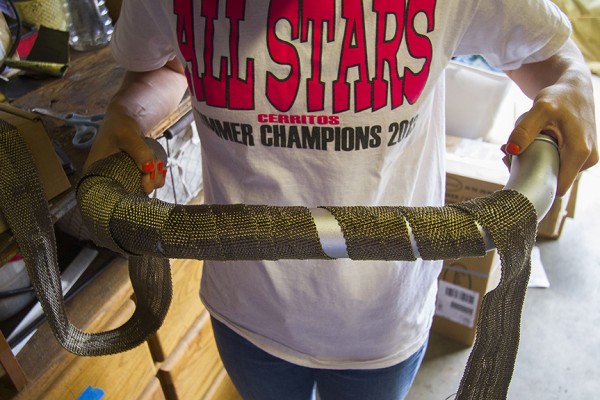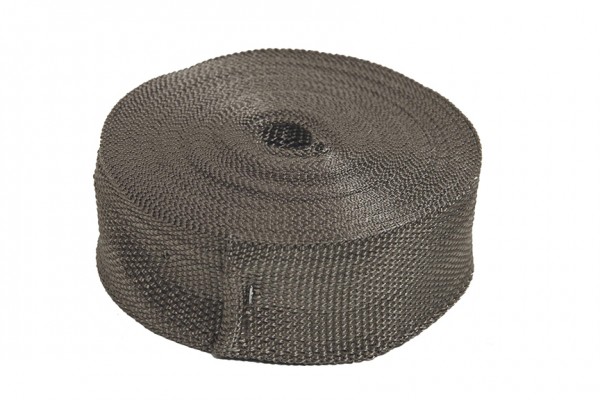Our friend and OnAllCylinders contributor Jesse Kiser picked up a 1974 Honda 360 as a first bike for his wife, who is new to motorcycles. The Honda’s exhaust pipes were solid but rusted, pitted, and plain ugly. Getting exhaust pipes for a 360 isn’t hard, but getting a nice set isn’t cheap.
Like most everyone else, Kiser is not made of money and had a budget to stick to, so he opted to rehab the old pipes.
Kiser decided to go the exhaust wrap route. It’s easy to install, inexpensive, and looks a lot better than grungy steel. Another benefit of the wrap is that it moves heat transfer down into the muffler and away from engine or the rider’s shins.
Jesse went with Summit Racing’s Volcano Exhaust Wrap. Made with crushed lava rock, Volcano Wrap is rated to 1,800 degrees F continuous and 2,500 degrees F intermittent. Unlike fiberglass wrap, you don’t need to soak the Volcano wrap in water. And the titanium color looks pretty tough. Like most exhaust wrap, Summit Racing’s Volcano Exhaust Wrap is designed for use with locking ties, but for bikes you can get away with hose clamps. Jesse went with the latter because it’s cheaper and you can’t see the end of wrap under our pipe cover that’s factory for certain Honda 360s.
Installing exhaust wrap on motorcycle pipes isn’t difficult, but you have to have some patience to get the wrap to lay down properly. For example, loosely wrap the material around the pipe just once, holding it in place with the tips of your fingers. Measure how many loops will cover the pipe completely, allowing for a quarter-inch overlap. If you can, go a little bit long.
Follow along below as Jesse turns his 360’s pipes from blech to bitchin’. To learn more about Jesse’s Honda build, see the article series at his motorcycle blog, Rideapart.com.








Comments